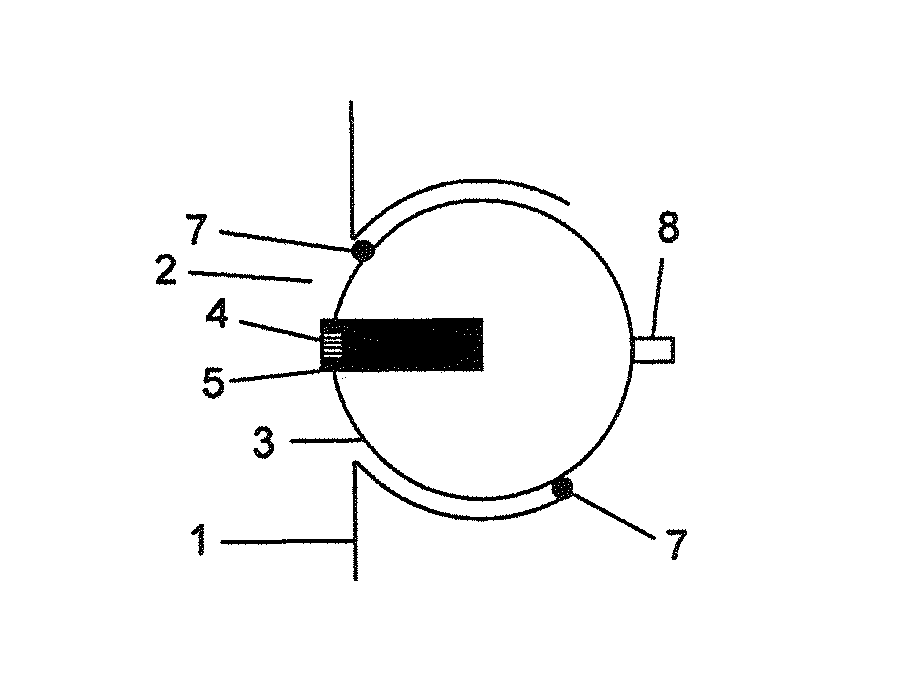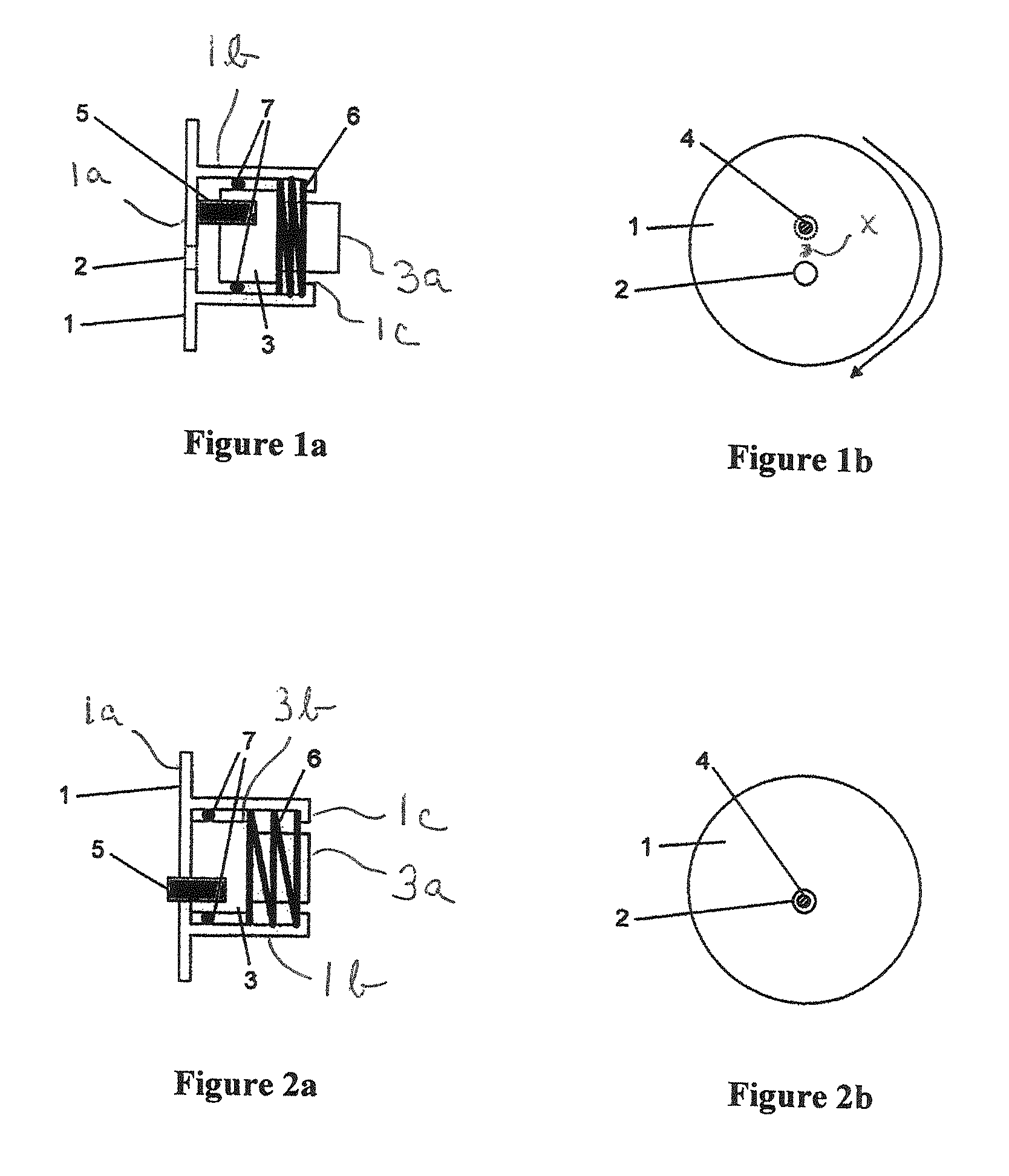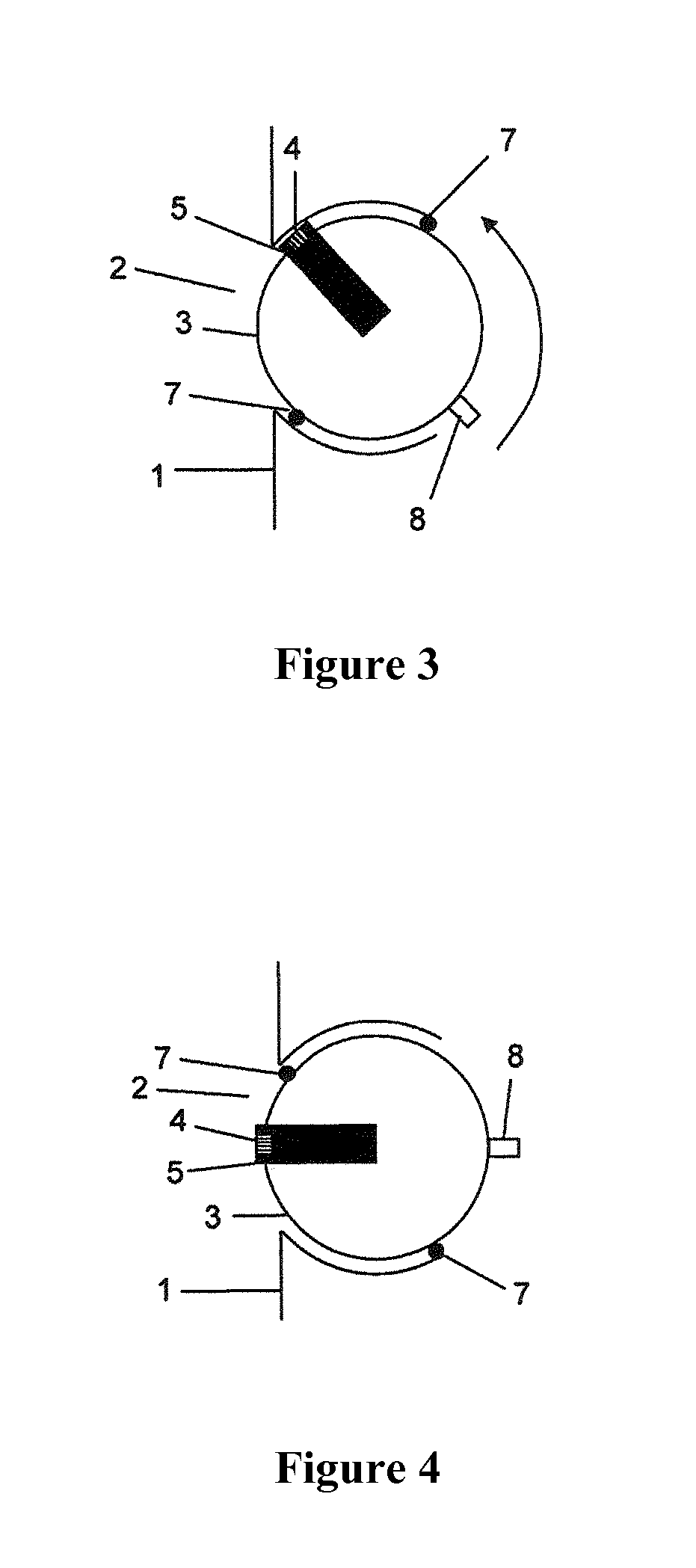Sensor protector
a technology for protecting sensors and optical sensors, applied in the field of sensor protectors, can solve the problems of hydrophilic optical sensors, damage to optical sensors, damage to ph sensor patches, etc., and achieve the effects of reducing manufacturing costs, reducing sensitivity to sterilization, and improving signal-to-noise ratio
- Summary
- Abstract
- Description
- Claims
- Application Information
AI Technical Summary
Benefits of technology
Problems solved by technology
Method used
Image
Examples
Embodiment Construction
[0024]According to FIGS. 1a to 4, the sensor protector has an upper part 1 and a lower part 3. The lower part 3 has a sensor housing 3a and an optical sensor 4 is mounted in or on a projection 5 that is connected to the sensor housing 3a of the lower part 3. By means of rotation about a rotational axis x, which rotation is shown by the direction of the arrow, the optical sensor 4 is movable toward an opening 2 in the lower part 1. Seals 7, for example one or more O-rings, prevent, firstly, the leakage of the medium from the container and, secondly, contamination of the medium by, for example, airborne germs.
[0025]According to FIGS. 1a to 2b, the upper part 1 has a base 1a with the opening 2, an cylindrical outer wall 1b projecting from the base 1a and a flange 1c projecting in from an end of the outer wall 1b remote from the base 1a. A spring 6 is mounted on the sensor protector between a step 3b of the sensor housing 3a and the flange 1c and urges the lower part 3 toward the base 1...
PUM
 Login to View More
Login to View More Abstract
Description
Claims
Application Information
 Login to View More
Login to View More - R&D
- Intellectual Property
- Life Sciences
- Materials
- Tech Scout
- Unparalleled Data Quality
- Higher Quality Content
- 60% Fewer Hallucinations
Browse by: Latest US Patents, China's latest patents, Technical Efficacy Thesaurus, Application Domain, Technology Topic, Popular Technical Reports.
© 2025 PatSnap. All rights reserved.Legal|Privacy policy|Modern Slavery Act Transparency Statement|Sitemap|About US| Contact US: help@patsnap.com



